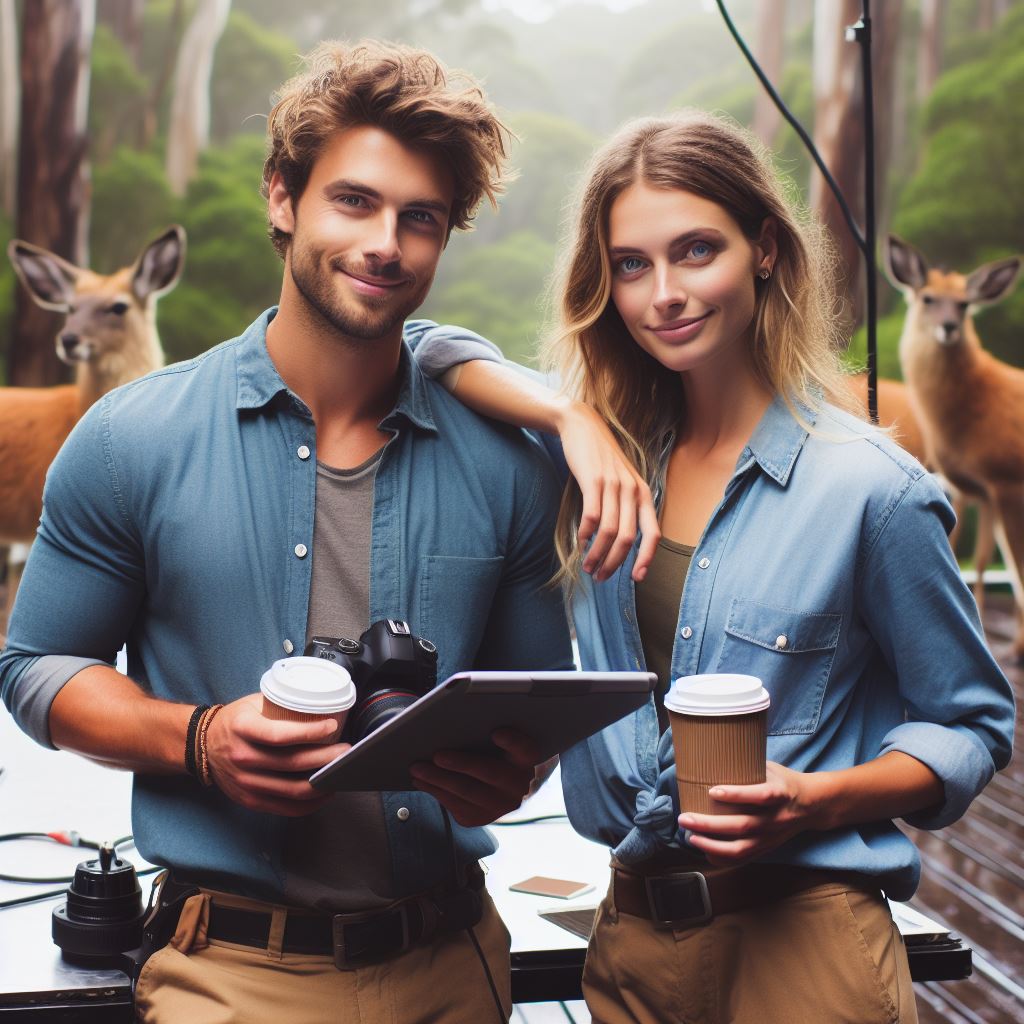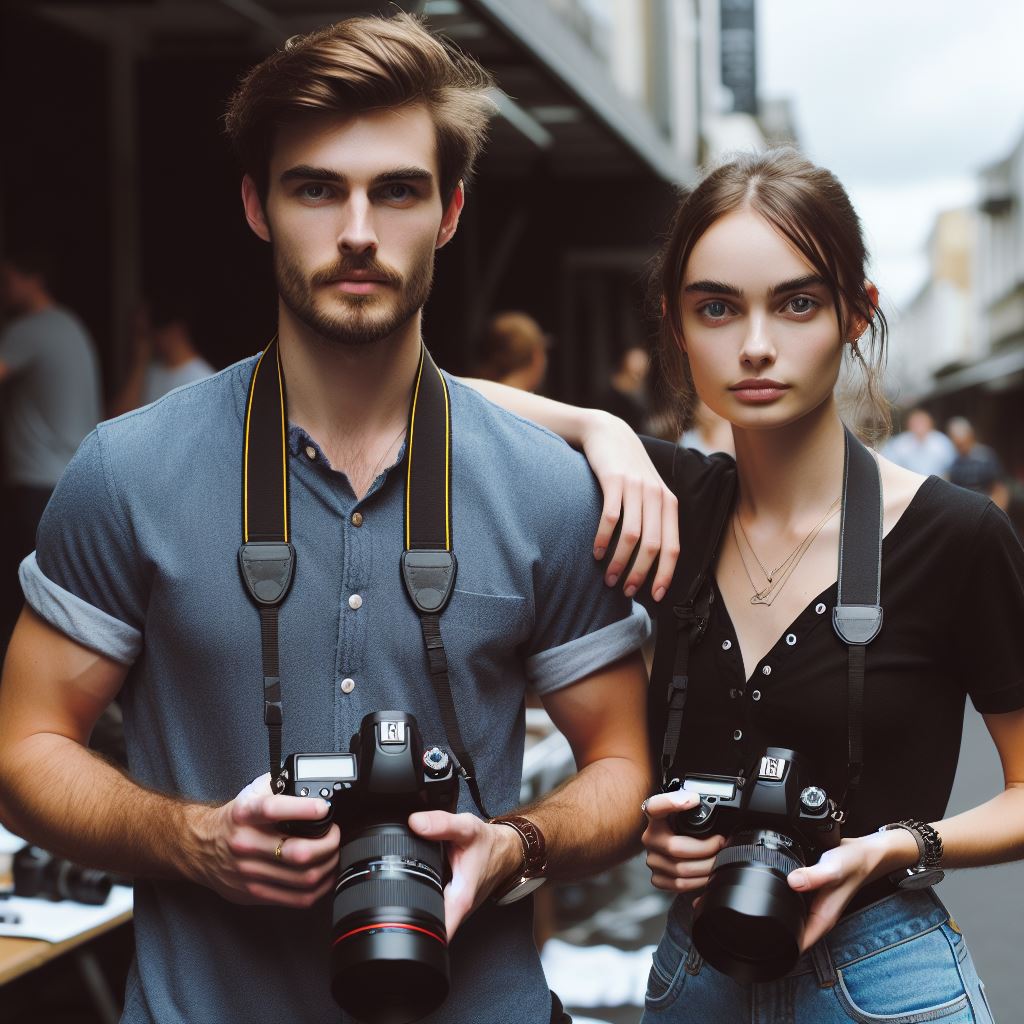Introduction
- In this blog post, we will explore the topic of Indigenous perspectives in Australian photography.
- The purpose of this blog post is to shed light on the significance and impact of Indigenous perspectives in the field of photography.
- The main points that will be discussed are the representation of Indigenous culture, the exploration of identity, and the decolonization of photographic narratives.
Indigenous perspectives in Australian photography have played a vital role in capturing the rich cultural heritage of the Aboriginal and Torres Strait Islander peoples.
This form of artistry provides a unique lens through which traditional and contemporary Indigenous experiences can be portrayed.
The purpose of this blog post is to celebrate and acknowledge the importance of Indigenous perspectives in the realm of photography.
It aims to highlight their contribution to challenging stereotypes, showcasing the diversity of Indigenous cultures, and reclaiming narratives.
Throughout this section, we will delve into the representation of Indigenous culture in photography. By capturing the beauty, traditions, and rituals of Indigenous communities, photographers have helped preserve and share their stories.
Exploring Indigenous Identity Through the Lens: A Narrative of Empowerment and Decolonization in Australian Photography
Furthermore, we will examine how Indigenous photographers have used their craft to explore themes of identity.
Through self-portraits and visual storytelling, they navigate the complexities of their heritage, challenging preconceived notions and reclaiming their Indigenous identities.
Lastly, this section will discuss the importance of decolonizing photographic narratives.
Indigenous photographers have provided an alternative perspective, disrupting the dominant Western gaze and offering a more authentic portrayal of Indigenous peoples.
Overall, this blog post aims to showcase the invaluable contributions of Indigenous perspectives within the Australian photography landscape, emphasizing their role in shaping cultural understanding and promoting social change.
Historical Context
- The historical representation of Indigenous Australians in photography has been problematic.
- Negative stereotypes and misrepresentations have prevailed in these photographs.
- These portrayals have had a significant impact on Indigenous communities.
In exploring the topic of “Indigenous Perspectives in Australian Photography,” it is essential to consider the historical context surrounding the representation of Indigenous Australians in this medium.
Photography’s Impact: Unveiling the Historical Misrepresentation of Indigenous Australians
Photography has served as a tool for documenting and portraying Indigenous life in Australia since its introduction in the mid-19th century.
However, the historical representation of Indigenous Australians in photography has often reinforced negative stereotypes and misrepresentations.
From the early colonial period, Indigenous Australians were often depicted in photographs as exotic curiosities or objects of scientific study.
These images perpetuated the myth of Indigenous people as primitive, uncivilized, and inferior to European settlers.
The prevalent use of these negative stereotypes in photography served to dehumanize and marginalize Indigenous communities. It reinforced racist ideologies and contributed to the systemic discrimination and mistreatment they faced.
Challenging Stereotypes: The Ongoing Impact of Misrepresentation on Indigenous Australians
Photographs featuring Indigenous Australians were frequently used to support the government’s assimilation policies, which aimed to erase Indigenous culture and force Indigenous people to adopt Western ways of life.
This misrepresentation was not limited to historical photographs. Even in contemporary photography, Indigenous Australians are often portrayed through the lens of poverty, crime, and dysfunction.
These images further perpetuate harmful stereotypes and fail to represent the diversity and resilience of Indigenous communities.
The impact of these portrayals on Indigenous communities cannot be underestimated. Constant exposure to negative imagery can erode self-esteem and reinforce feelings of shame and inferiority.
It perpetuates a cycle of discrimination and prejudice, affecting the social, economic, and emotional well-being of Indigenous individuals.
Empowering Indigenous Voices: Shifting Narratives in Australian Photography
Furthermore, misrepresentations in photography can contribute to the erasure of Indigenous voices and perspectives.
By portraying Indigenous people as objects of study or pity, their agency and autonomy are undermined, reinforcing the notion that they are passive subjects rather than active participants in their own stories.
However, it is important to acknowledge that there have also been counter-narratives in Australian photography that challenge these negative portrayals.
Indigenous photographers and artists have actively sought to reclaim their representation through their own lens, celebrating their culture, strength, and resilience.
Your Personalized Career Strategy
Unlock your potential with tailored career consulting. Get clear, actionable steps designed for your success. Start now!
Get StartedThese Indigenous perspectives in Australian photography provide a powerful alternative to the historical misrepresentations.
They invite viewers to see Indigenous Australians as individuals with agency, pride, and deep connections to their land and culture.
Transforming Narratives: From Stereotypes to Empowering Indigenous Perspectives in Australian Photography
In essence, the historical representation of Indigenous Australians in photography has been plagued by negative stereotypes and misrepresentations.
These portrayals have had a significant impact on Indigenous communities, perpetuating discrimination, eroding self-esteem, and marginalizing their voices.
However, the rise of Indigenous perspectives in Australian photography offers hope for a more authentic and inclusive representation.
It is crucial for photographers, viewers, and society as a whole to actively engage with and support these perspectives to foster understanding, respect, and reconciliation.
Read: Australian Music Awards: A Closer Look
Contemporary Indigenous Photographers
The work of prominent Indigenous photographers in Australia
- Tracey Moffatt: Known for her powerful and thought-provoking images capturing Indigenous experiences.
- Michael Cook: Explores themes of identity, colonization, and the impact of history on Indigenous communities.
- Destiny Deacon: Uses humor and irony to depict the politics of race, representation, and stereotypes.
- Ricky Maynard: Documents the ongoing struggles and resilience of Indigenous communities in Tasmania.
Their unique perspectives and approaches to photography
- Tracey Moffatt subverts traditional narratives by presenting alternative views and challenging historical representation.
- Michael Cook adopts a staged and cinematic approach to create visually stunning images that confront colonial legacies.
- Destiny Deacon combines personal experience and political activism to challenge dominant cultural stereotypes.
- Ricky Maynard’s documentary-style photography focuses on the resilience and strength of Indigenous communities.
How their work challenges stereotypes and promotes cultural preservation
- Through their photography, these artists offer an alternative portrayal of Indigenous peoples, breaking stereotypes perpetuated by mainstream media.
- They capture the diversity and complexity of Indigenous experiences, promoting understanding and appreciation of Indigenous cultures.
- By challenging colonial narratives and stereotypes, their work actively contributes to the preservation and revitalization of Indigenous cultures.
- Their photographs give voice to Indigenous communities, advocating for social justice and recognition of Indigenous rights.
In the realm of Australian photography, Indigenous artists bring a unique perspective that challenges stereotypes, preserves culture, and promotes social change.
Through their work, artists like Tracey Moffatt, Michael Cook, Destiny Deacon, and Ricky Maynard boldly and creatively disrupt dominant narratives, offering new representations of Indigenous experiences.
Their photography serves as a powerful tool for cultural preservation and activism, reminding viewers of the resilience, strength, and beauty of Indigenous cultures.
As their perspectives continue to inform and shape the Australian photographic landscape, their contributions leave an indelible mark on the future of Indigenous representation in art.
Read: The Evolution of Australian Music Genres
Indigenous Cultural Heritage in Photography
Explore the ways Indigenous photographers capture and preserve cultural heritage
- Indigenous photographers use imagery to document traditions, ceremonies, and daily life.
- They capture the essence of their culture through portraits, landscapes, and close-ups.
- By photographing cultural artifacts, they preserve and showcase their heritage.
- Indigenous photographers ensure the continuity of their traditions through visual storytelling.
- They strive to represent their culture with authenticity and respect.
The importance of storytelling and cultural symbolism in their work
- Indigenous photography offers a platform to share stories and reclaim their narratives.
- Through visual storytelling, photographers communicate the significance of their cultural practices.
- Symbolism is deeply embedded in their photographs, reflecting spirituality and ancestral connections.
- Photographs capture the essence of cultural symbols, transmitting their meaning across generations.
- Indigenous photographers establish a visual language that resonates with their communities and beyond.
Examine the role of photography in indigenous cultural revitalization
- Photography plays a crucial role in revitalizing and preserving Indigenous cultures.
- Indigenous photographers use their medium to reclaim their traditions from colonial narratives.
- Through photography, they challenge stereotypes, fostering cultural pride and self-determination.
- Photographs become a tool to educate both Indigenous and non-Indigenous communities about their heritage.
- Indigenous photographers contribute to the decolonization and empowerment of their communities.
Indigenous photographers play a pivotal role in capturing and preserving their cultural heritage. Their work showcases the rich traditions and symbols that define Indigenous cultures.
Through photography, they tell stories, reclaim narratives, and revive their ancestral connections. By sharing their visual language, they educate and empower both Indigenous and non-Indigenous communities.
Photography becomes a powerful tool for Indigenous cultural revitalization and the decolonization of narratives.
Read: How to Network in Australia’s Music Scene

Collaborations and Indigenous Empowerment
Collaborative Projects between Indigenous Photographers and Communities
- Collaborative projects foster meaningful connections between Indigenous photographers and communities.
- Photographers work closely with communities, capturing their lives, stories, and cultural heritage.
- Collaborations enable photographers to gain a deeper understanding of Indigenous perspectives and experiences.
- The involvement of Indigenous photographers ensures authenticity and avoids cultural appropriation.
- Indigenous photographers act as cultural ambassadors, bridging the gap between cultures through their work.
Empowerment and Amplification of Indigenous Voices through Photography
- Photography provides a platform for Indigenous voices to be heard and stories to be shared.
- Through their images, Indigenous photographers challenge stereotypes and misconceptions.
- Indigenous photographers reclaim their narrative, asserting their own representation in mainstream media.
- Sharing the beauty and resilience of Indigenous culture instills pride and empowerment within communities.
- Indigenous photographers document contemporary issues, shedding light on social, environmental, and political issues.
Positive Impact of Collaborations on Community Identity and Pride
- Collaborative photography projects contribute to the preservation of cultural identity.
- Empowering representations foster a sense of belonging and strengthen community bonds.
- Photographs become powerful tools for intergenerational storytelling, passing down traditions and knowledge.
- Involvement in photography projects enhances self-esteem within Indigenous individuals, nurturing cultural pride.
- Positive media representation generated through collaborations challenges systemic marginalization.
Empowering Narratives: Indigenous Photographers Fostering Authentic Connections and Challenging Stereotypes
Collaborations between Indigenous photographers and communities have a profound impact on both parties involved.
These projects provide an opportunity for Indigenous photographers to connect with their communities on a deep level, capturing their lives and cultural heritage.
The collaborative nature of these initiatives ensures authenticity and avoids cultural appropriation, as the photographers themselves belong to the communities they are documenting.
Through their powerful photographs, Indigenous photographers become cultural ambassadors, bridging the gap between Indigenous and mainstream cultures.
They challenge stereotypes and misconceptions, offering an alternative narrative that reflects the beauty, resilience, and diversity of Indigenous cultures.
Empowering Through Lens: Indigenous Photography as a Catalyst for Change
Photography serves as a vital platform for Indigenous voices to be amplified and heard. It provides a means to challenge systemic marginalization, reclaiming Indigenous narratives and representation in mainstream media.
Indigenous photographers use their art to address contemporary issues, shedding light on social, environmental, and political problems affecting their communities.
The positive impact of collaborations between Indigenous photographers and communities extends beyond the art itself. These projects contribute to the preservation of cultural identity, fostering a sense of belonging and strengthening community bonds.
The photographs become powerful tools for intergenerational storytelling, passing down traditions and knowledge from one generation to the next.
Empowering Indigenous Voices: Photography’s Role in Cultural Preservation and Community Pride
Participation in photography projects also has a positive effect on the individuals involved. Through their involvement, Indigenous photographers gain a sense of pride and empowerment, enhancing their self-esteem.
By sharing the beauty and resilience of their culture, they inspire others within their communities to embrace and celebrate their heritage.
All in all, collaborations between Indigenous photographers and communities play a significant role in capturing and preserving Indigenous perspectives in Australian photography.
These projects empower Indigenous voices, challenge stereotypes, and contribute to community identity and pride.
By embracing Indigenous perspectives and amplifying Indigenous voices, photography becomes a powerful tool for cultural preservation, empowerment, and social change.
Stand Out with a Resume That Gets Results
Your career is worth more than a generic template. Let us craft a resume and cover letter that showcase your unique strengths and help you secure that dream job.
Get HiredRead: Music Production: A Guide for Aussies
Challenges and Opportunities
Address the challenges faced by Indigenous photographers in the industry
- Limited access to resources and funding for equipment and professional development.
- Bias and prejudice leading to underrepresentation and exclusion from mainstream photography platforms.
- Cultural appropriation and misrepresentation, where indigenous perspectives are misunderstood or commodified.
- Lack of mentorship and support networks specific to indigenous photographers.
- Balancing cultural responsibilities and artistic expression while navigating the industry.
The importance of inclusivity and equal representation
- Inclusivity provides diverse perspectives, enriches storytelling, and promotes cultural understanding.
- Equal representation empowers indigenous photographers and challenges stereotypes.
- It inspires younger generations and strengthens cultural identity within indigenous communities.
- Inclusivity fosters a more inclusive and respectful industry as a whole.
- It encourages collaboration, knowledge exchange, and mutual respect among photographers of different backgrounds.
The opportunities for further growth and recognition of Indigenous perspectives in photography
- Increased collaboration between indigenous and non-indigenous photographers to promote shared understanding.
- Establishment of dedicated platforms and spaces for indigenous photographers to showcase their work.
- Support from institutions and organizations through funding and scholarships for indigenous photographers.
- Education and awareness programs that highlight indigenous perspectives and challenge stereotypes.
- Mentorship programs that connect indigenous photographers with experienced professionals in the field.
Empowering Indigenous Voices: Overcoming Challenges in Photography
Indigenous photographers face numerous challenges within the industry, including limited access to resources and funding for equipment and professional development.
This lack of support can hamper their ability to realize their full potential and pursue their passion for photography. Additionally, bias and prejudice often lead to underrepresentation and exclusion from mainstream photography platforms.
An important aspect of addressing these challenges is highlighting the significance of inclusivity and equal representation in photography.
By including indigenous perspectives, the industry becomes more diverse, enriching storytelling and promoting cultural understanding.
Equal representation empowers indigenous photographers, challenging stereotypes and inspiring future generations to explore their artistic potential.
Fostering Inclusivity: Empowering Indigenous Perspectives in Photography
Inclusivity and equal representation not only benefit indigenous photographers but also society as a whole.
It fosters a more inclusive and respectful industry, encouraging collaboration, knowledge exchange, and mutual respect among photographers of different backgrounds.
To further promote growth and recognition of indigenous perspectives in photography, various opportunities can be explored.
Increased collaboration between indigenous and non-indigenous photographers can promote shared understanding and mutual respect.
The establishment of dedicated platforms and spaces for indigenous photographers to showcase their work provides exposure and recognition.
Fostering Indigenous Photographic Talent: Nurturing Through Funding, Education, and Mentorship
Institutions and organizations can support indigenous photographers through funding and scholarships, enabling them to access necessary resources and pursue their artistic endeavors.
Additionally, education and awareness programs can play a pivotal role in highlighting indigenous perspectives, challenging stereotypes, and promoting cultural sensitivity.
Mentorship programs that connect indigenous photographers with experienced professionals in the field offer guidance and support, helping them navigate the industry more effectively.
By providing these opportunities, the industry can grow and evolve, ensuring the diverse voices of indigenous photographers are heard and valued.
Conclusion
- To recap, this blog post explored the importance of Indigenous perspectives in Australian photography.
- Indigenous perspectives bring forth unique narratives, challenging colonial narratives, and offering a more comprehensive understanding of Australian history and culture.
- It is crucial to support and explore the work of Indigenous photographers as they provide a vital platform for their communities and promote cultural diversity in the arts.
Indigenous perspectives in Australian photography serve as a powerful tool for reclaiming identity and challenging dominant narratives.
By focusing on the stories and experiences of Indigenous peoples, these photographers offer a more nuanced understanding of Australian history and culture.
It is our responsibility as readers and consumers to actively seek out and support their work, amplifying their voices and promoting cultural diversity in the art world.
Through this, we can contribute to a more inclusive and balanced representation of Australian society.




